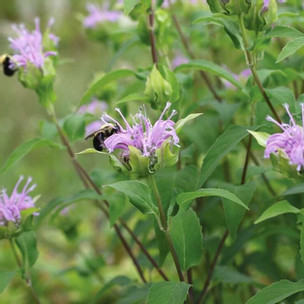Follow Up to Conservation Summer Camp #3: Restoring Native Habitat
- Kriss Marion

- Sep 24, 2021
- 6 min read
Updated: Sep 27, 2021
Women landowners are hungry to learn more about how to nurture natives on their land. Our WiWiC surveys indicate this is a top priority, and our July 29, 2021, workshop was certainly indicative of the desire to learn with over 125 attending and participating in a rambunctious chat with presenters Carissa Knab, Farm Bill Biologist with Pheasants Forever, and Harriet Behar, WiWiC Conservation Coach. Below we have published the resources from our presenters and the answers to the chat questions.
You can also WATCH BOTH PRESENTATIONS again on the Michael Fields Agricultural Institute YouTube channel, as well as previous Summer Camp Zooms on Building Healthy Soil and Increasing Pollinator Habitat. Stay tuned for our upcoming Conservation Plan Writing Workshops by signing up for our newsletter and/or following us on Facebook/Instagram/Pinterest.
Resources from Chat
Restore Native Habitat Powerpoint
Pheasants Forever Farm Bill Biologists
Establishing Native Prairie Plantings Without Using Herbicides by Harriet Behar
Native Plant Handout by DNR
Prairie Moon Nursery - Native plants for gardening and restoration
Prairie Nursery - Natvie plants and seeds
Invasive Species Master Resource Table - Renz Weed Science, UW Extension
Invasive Plant Identification Videos - Renz Weed Science, UW Extension
The Nature Conservancy - Tremendous resource on native plant and animal communities
Farmland Access Hub - Renewing the Countryside
Questions and Answers
1- Can you share full names of acronyms used?
Click on the links below to go to each agency’s or organization’s website and learn more.
Here’s a great resource with many of the program acronyms used within the Natural Resources Conservation Services (NRCS).
Here are a few NRCS program acronyms mentioned in the series:
EQIP - Environmental Quality Incentives Program - provides financial and technical assistance to agricultural producers and non-industrial forest managers to address natural resource concerns and deliver environmental benefits such as improved water and air quality, conserved ground and surface water, increased soil health and reduced soil erosion and sedimentation, improved or created wildlife habitat, and mitigation against drought and increasing weather volatility.
CSP – Conservation Stewardship Program – helps eligible farmers build on existing conservation efforts while strengthening farm operation.
CRP – Conservation Reserve Program - provides technical and financial assistance to eligible farmers and ranchers to address soil, water, and related natural resource concerns on their lands in an environmentally beneficial and cost-effective manner
2. We have a lot of autumn olive and unfortunately, burning has made no difference. Do you have recommendations?
Autumn olive and many of the invasive woodies are resprouters so burning and mowing tends to encourage them.
DNR - Overview and control of Autumn Olive.
Mechanical: Pull seedlings. Cutting, mowing, and burning not recommended because plants will resprout unless followed up with chemical control.
Chemical: Treat foliage, cut surface, or girdled stems with glyphosate, triclopyr ester, or metsulfuron-methyl with a surfactant. Basal bark application of triclopyr ester can also be effective. Treat foliage with a liquid spray during the active growing season. For cut stump or girdled bark treatment, use liquid herbicide by painting, dripping, or sponging onto a surface.
Autumn Olive: Your Invasive, Seedy Neighbor - The Nature Conservancy
Autumn Berry Inspired - Autumn Berry Inspired creates food from the berries of the Autumn Olive. Their goal is to create products that “raise ecological awareness and promote the maximum utilization of resources”.
3 - What do you do to control Burdock?
Burdock can be controlled by severing the root. I use a Parsnip predator.
We use parsnip predators also on ours. Great tool!!
If you have plants with seeds on them, you need to carry those seeds out.
Goats love burdock, if that's an option!
Wisconsin Department of Natural Resources Control Methods
Wisconsin Weed Identification - Common burdock
4 - How would you recommend getting rid of Canada thistle? I mow and cut and mow and cut. We have massive waves of it. Perhaps the seed is regenerating?
Canada thistle is clonal so disturbance, such as mowing or burning tends to encourage it. If you're not opposed to herbicide, that's the best way. If you prefer no herbicide, you can try smothering
The best way I know to deal with Canada Thistle as an organic farmer is to mow it at the right time.
Canada thistle control: mow, hoe, cut, or pull every 3wks. In 1 season this will reduce over 90% of the thistle population. The key is to do it VERY regularly
Organic Management of Canada Thistle
Managing Canadian Thistle - Penn State
5 - Information about the Conservation Reserve Program and FSA from Myha Ewoldt.
The USDA Farm Service Agency Conservation Reserve Program (CRP) has multiple options for restoring native habitat on your land. Financial benefits may include annual per acre rental payments, cost share assistance, signing incentives, and establishment incentives. I have attached a fact sheet on one of the many native cover options through the CRP program: Pollinator and Monarch Habitat. If you are interested in learning more or signing up, contact your local USDA Service Center farmers.gov/service-locator.
For those interested in the CRP Program who are located in Eau Claire, Chippewa, Rusk, or Sawyer County feel free to reach out to me, Myha Ewoldt, at myha.ewoldt@usda.gov
6 - Do others see less bee diseases with the diverse plants around?
I've been reading studies on this recently. Honeybees tend to bring diseases to the native bees and they can outcompete them for resources. We had very few bee hives (2-4) on our 60 acres of restored native and didn't see any less disease in the honeybees. We have since removed them to encourage and help the native bees.
One of the great benefits of having all of these native plant species around is that they support all sorts of native insect populations (insects are in great decline both here in North America and across Europe). Many native insects are reliant on just one native plant or a few native plants to complete their life cycles. And these insects are incredibly important for breeding birds, who rely on this protein source during breeding season.
I agree that honeybees bring disease to native bees. I’m an entomologist but don’t study bees (so I could be wrong about this, just guessing), but maybe the diversity on Harriet’s farm is making the bees healthier overall, so they are less susceptible to disease.
7 - Do you have to have farmland to enroll in CRP?
For CRP, the land has to have been cropped 4 out of 6 years from 2012 to 2017. Commodity crops (corn, soy) are pretty straight forward. Sometimes we have to go back further in time to determine the eligibility of fields that have been in hay.
There is also Grasslands CRP which doesn't require any sort of cropping history. This program is for acres already in a grass cover and allows for haying and grazing.
8- Can you tell me more about your greenhouse Harrient?
I have an earth-bermed solar greenhouse. It can be built up against a garage or other building too. I live where there are many hills, so it makes sense to build it into the hillside here, but not everyone has that.
9 - You mentioned using plants for dye--do you have specific ones you use?
Some of my favorites include Queen Anne's lace to make a beautiful yellow dye, orange jewelweed for a beautiful peachy orange, mullein gives a gold to brown, and garden huckleberry gives a blueish grey. I usually dye with about 20-25 plants every year, just did some bergamot and onion skins from last year (greenish yellow and beige gold)
10 - Don’t forget that there are a lot of professionals who restore and manage native habitats. They have a wealth of information and experience.
You can also reach out to info@wiwic.org if you'd like to connect with a professional and aren't sure where to begin.
I have done restorations myself on my farm and professionally, but am still planning to hire someone to help me enhance my CRP re-enrollment to the Monarch safe practice. Sometimes, there just are not enough hours in the day. You can create beautiful habitat on your farms, but there is no shame in asking for help:-).
11 - How do native plants interact with other parts of the ecosystem?
Without native plants, we lose our insects, which provide the protein for rearing baby birds, mammals, and herptiles. Similar declines are being experienced by groups including amphibians, reptiles, insects, bats.
Also I recently learned that waiting to harvest grain until mid July helps protect bobolink nesting habitat
Make sure to leave sufficient refugia when creating disturbances so insects can repopulate. Disturbance units are critical. Refugia is needed by so many pollinators and herps.
12 - I'm curious if folks have heard much about beetle banks?
Beetle banks are a way of creating habitat for our predatory ground beetles and other insects. It's purpose is to create insect diversity and a feeding guild that supports parasitoids for control of pests. I've been researching this. There's not a lot out there just yet.
http://oregonipm.ippc.orst.edu/Agroecology/NEW_BEETLE_BANK_1.pdf
Just Googled this PDF from Oregon State - different climate, but may be helpful. - https://beebettercertified.org/habitat-highlight-beetle-banks
13. Important to consider surrounding land use.
Sometimes it can be incredibly helpful to get to know your neighbors and determine whether or not you may have some common goals that can be achieved by working in concert rather than as sole landowners.

















